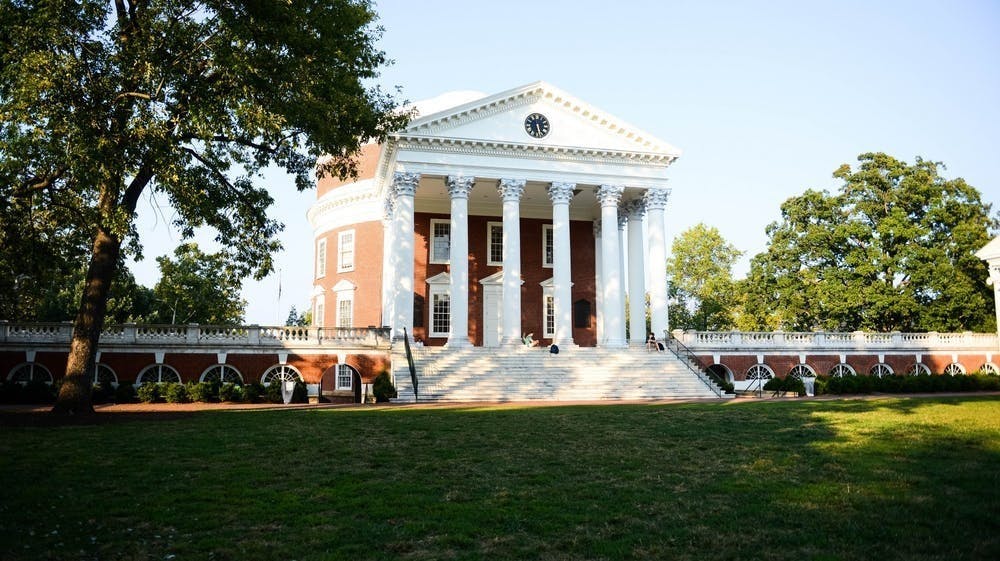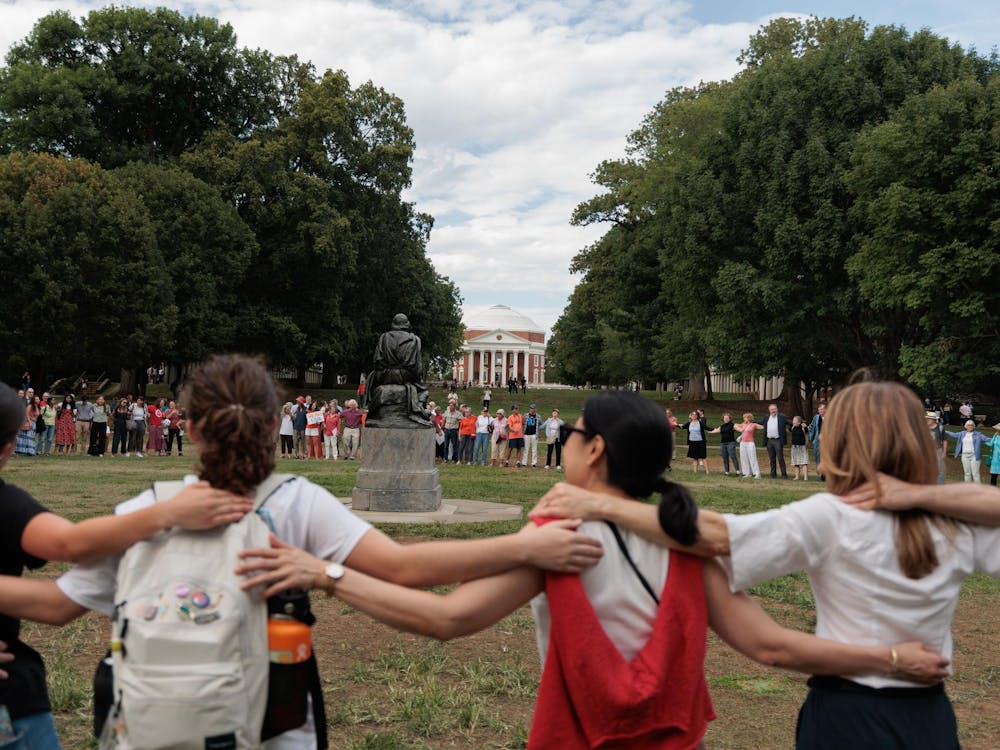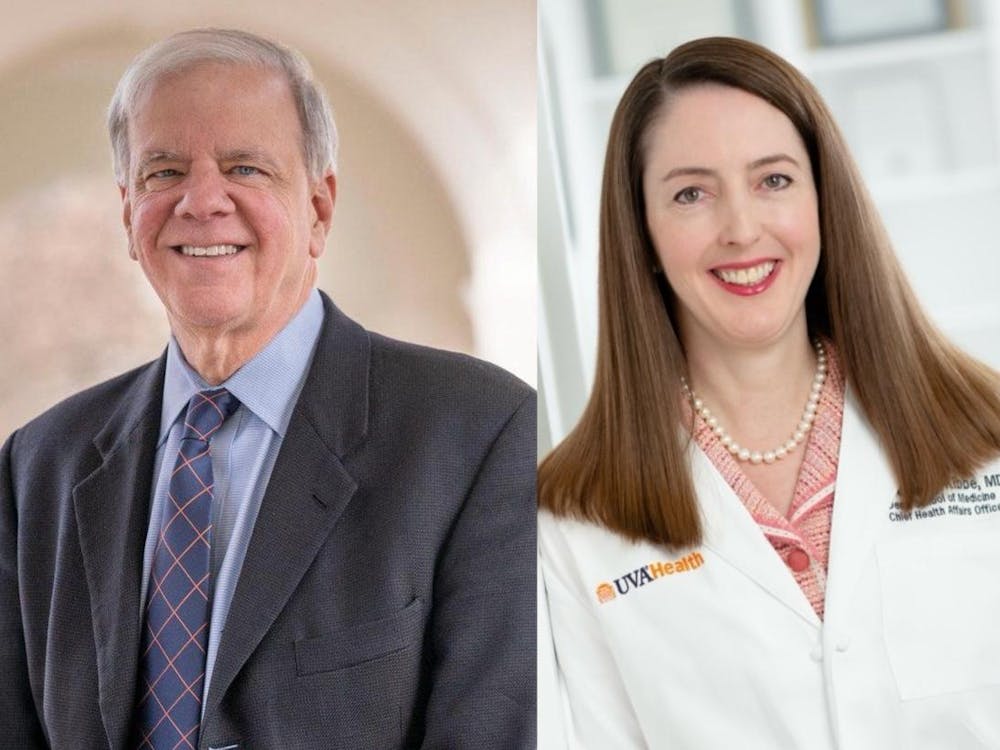Lea en español
University President Jim Ryan, Provost Liz Magill and Chief Operating Officer J.J. Davis joined The Cavalier Daily for a Zoom interview Tuesday to recap the fall semester and discuss the University’s plans ahead of an extended winter break. During the interview, they all agreed they are pleased with how the University fared this semester despite the pandemic.
Ahead of the fall semester, Ryan said that some of his administration’s goals were to bring students back and give them as positive of an experience as possible while being safe, as well as to not endanger the Charlottesville community. Under these metrics, Ryan said that he would consider the semester a success.
“Back in August and early September, most people were saying it was going to be impossible for us to have students back, to keep them safe and keep classes in person, and that's essentially what's happened,” Ryan said.
This semester, approximately 30 percent of University classes were conducted with an in-person component. University administrators have seen no evidence of COVID-19 transmission within these classroom environments.
Magill noted that in looking toward the spring semester, increasing the University’s in-person offerings is a major academic priority — one that has been helped by increased testing capacity and the knowledge that there has been no known classroom transmission. Some ideas for in-person opportunities next semester include encouraging students to form study pods, holding office hours on the Lawn or teaching large lecture classes in a stadium.
“The biggest challenge is delivering on the educational mission for students,” Magill said, adding that online classes and socially distanced classrooms with plexiglass shields is a much different experience than students are accustomed to. “The efforts by students and faculty have been nothing short of heroic.”
While Ryan said that there have definitely been “bumps along the road” when it comes to student compliance with the University’s public health guidelines, he said that the vast majority of students have been taking the health and safety guidelines seriously.
The University adjusted its approach to bringing students back to Grounds throughout the semester — first postponing on-Grounds move-in and in-person classes to two weeks after the start of online classes, then relocating hundreds of students’ residential housing assignments to increase quarantine and isolation capacity just before the rescheduled move-in date.
Since Aug. 17, the University’s COVID-19 tracker has recorded 1,234 cases of COVID-19 within the University community, of which 1,056 are students. Cases peaked in mid-September — about a week after the delayed undergraduate move-in date — with a single-day high of 59 cases reported on Sept. 17, of which 57 were students.
Among those 1,056 total student cases, however, Ryan said that no University students have been hospitalized for COVID-19. There currently are 20 COVID-19-related hospitalizations within the U.Va. Health system, three which are new as of Nov. 17.
As a response to the early rise in cases, the University announced new restrictions Sept. 22 to limit gatherings from groups of 15 to just five people, restrict travel to and from Charlottesville and enforce use of facial coverings at all times. Originally supposed to last at least two weeks, the enforcement rules were eventually extended and remained in place until Oct. 13.
Most recently, Dean of Students Allen Groves emailed students Sunday about recent reports of gatherings over the new 10-person limit during the weekend of Halloween and the following weekend at an Albemarle County winery.
Ryan noted that to his knowledge, there has been no evidence of University transmission of the virus into the Charlottesville and Albemarle community. The area has avoided surges seen across the Commonwealth, with many citing the University’s aggressive approach to controlling student cases as a potential key factor, along with local mask compliance.
The current seven-day moving average for the Thomas Jefferson Health District is 15.14, comprising data of the City of Charlottesville and Albemarle County along with Fluvanna, Greene, Louisa and Nelson Counties. Charlottesville and Albemarle reported a combined total of 21 cases Wednesday.
Though Ryan said that he hopes students return from winter break with the understanding that it is still important to follow University COVID-19 guidelines, he acknowledged that the longer the pandemic lasts, the harder it will be to maintain compliance.
He described the possibility that students may sidestep COVID-19 restrictions as the pandemic drags on as “a constant worry.”
“In some respects, complying with the health and safety guidelines will be even more important next semester because we’ll all be spending more time inside, which is higher risk,” Ryan said. “Everyone is going to have to come back determined to comply again and comply all the way through.”
As COVID-19 cases continue to rise across the country, Magill said that the University administration continues to meet daily with its epidemiology team to discuss the University’s response. While their largest concern is travel in and out of Charlottesville, Magill said that the University continues to track hospital capacity and supplies as well.
All students will be required to participate in pre-arrival testing through LetsGetChecked prior to returning to Grounds in February following an extended winter break. The University plans to conduct post-arrival testing of all students within five to seven days of the start of the semester. Prevalence testing, symptomatic testing and wastewater testing will continue throughout the spring semester.
Next semester’s quarantine and isolation capacity may likewise be subject to change. Throughout the fall semester, quarantine and isolation housing occupancy remained below 50 percent capacity, largely due to the volume of quarantine spaces available — roughly 1,500.
Along with converting several on-Grounds residences to quarantine and isolation spaces, the University booked several hotels in the Charlottesville area for the duration of the semester.
Davis said the University is currently evaluating the spring semester’s quarantine offerings.
“We'll make sure we have the appropriate number of isolation and quarantine beds to meet the needs of whatever the virus throws at us, but we might do it a bit differently in how we procure the hotels,” Davis said.
Quarantine housing is currently 2 percent occupied, and isolation space sits at 1 percent capacity.
“One thing that we decided is that it would be better to have too much quarantine and isolation space rather than too little,” Ryan added. “And I think that will be our guiding principle next semester as well.”
The University leaders praised the efforts of research faculty and staff behind saliva screening measures, who worked to make the testing accessible to the University community. First announced in early September, the saliva screening program was up and running by October, with 557 tests administered between Oct. 1 and Oct. 8.
Last week, 8,655 total tests were administered between Nov. 8 and Nov. 14, according to the COVID-19 tracker, which includes results from U.Va. Health Analytics, Student Health, Employee Health, testing vendor LetsGetChecked and saliva screening. Of these, 7,871 were conducted on students and 784 on University employees.
Magill and Davis, along with Chief Medical Advisor Dr. Mitchell Rosner, announced Nov. 5 that all University students — both on- and off-Grounds — can take a pre-departure test before returning home for Thanksgiving.
Davis reiterated that the University continues to watch national and local trends daily and acknowledged that pre-testing upon students’ return in February will be a crucial aspect of plans going forward.
“We are uniquely positioned to have very low COVID numbers here, but we are cognizant that people will travel home,” Davis said. “So I think we put the right measures in place, hopefully, to have a successful spring semester. But we’re always monitoring.”







